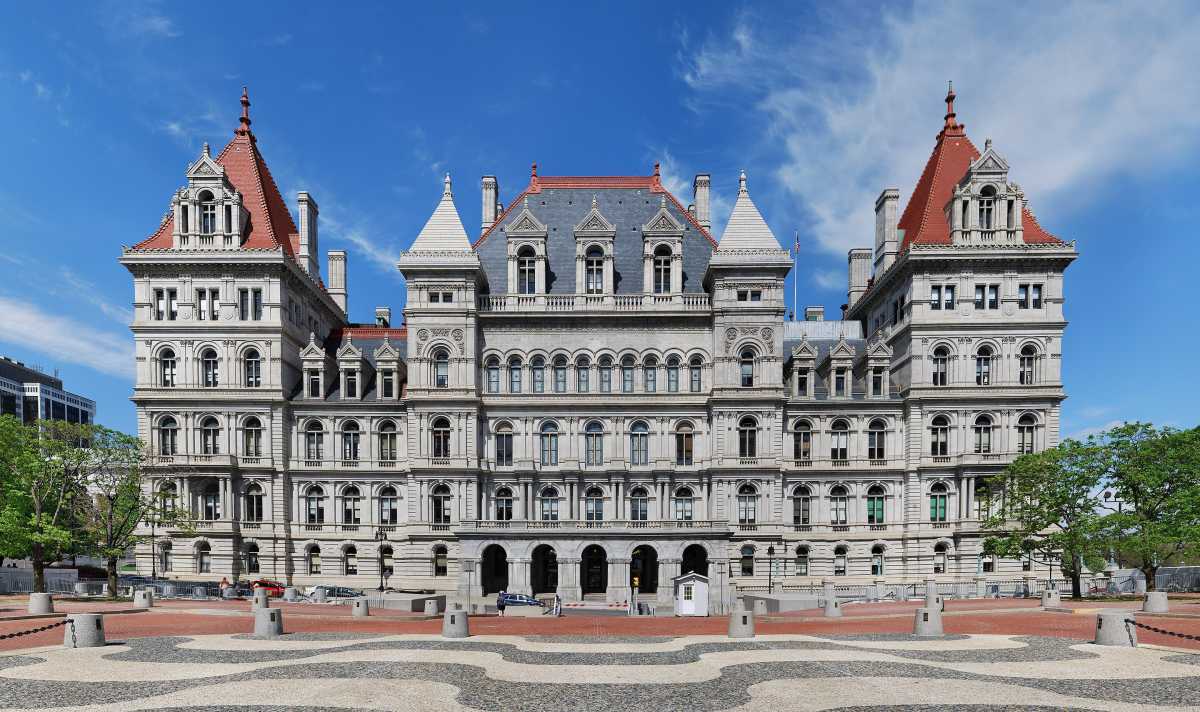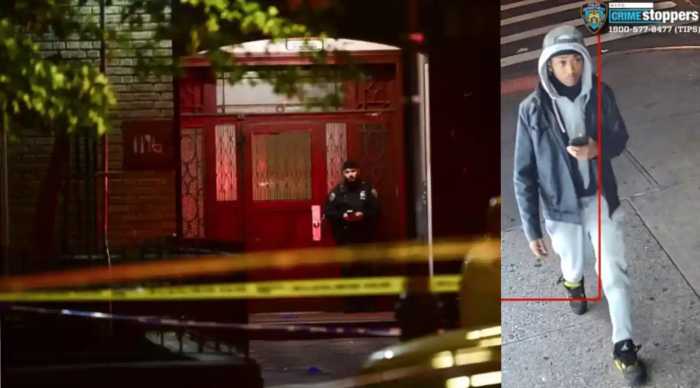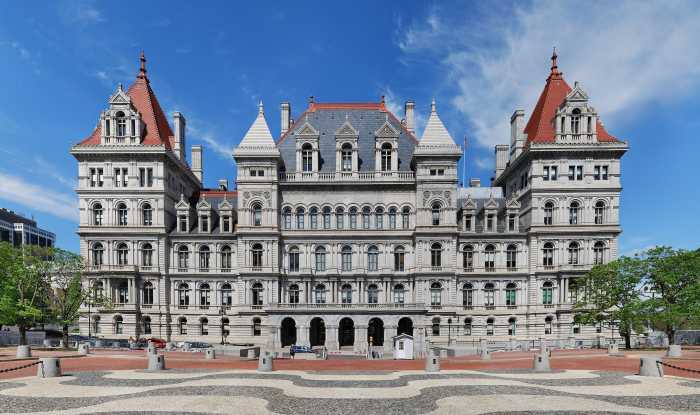By Patrick Hedlund
About 75 Soho residents joined with local activists and elected officials to protest the planned closing of the Prince St. post office last Wednesday, the same day crowds queued up to mail their tax forms by the April 15 deadline.
The United States Postal Service recently announced that it would be shuttering three Manhattan post offices, as well as scaling back 24-hour service at the main James Farley branch on Eighth Ave. in order to close its budget deficit.
Union leaders, state Senator Daniel Squadron, City Councilmembers Alan Gerson and Tony Avella, and two Council candidates, Margaret Chin and Pete Gleason, stood with sign-waving Soho Alliance members outside the post office’s entrance on Greene St. to press for action.
“The fact is, if we can’t afford post offices and we can’t afford local services, we don’t have neighborhoods in the city of New York anymore,” Squadron said. “And that is not O.K.”
Clarice Torrence, president of the New York Metro Area Postal Union, explained that if not for postal employees drawing attention to the closures, the issue might have gone unnoticed.
“It’s the union that let the community and the politicians know what the plans were,” she said, adding that her father used to work at the Prince St. location. “The Postal Service didn’t notify anybody — they deal in the dark.”
The two additional post offices originally set to close are at Columbus Circle and in Upper Manhattan, although it was reported last week that the W. 60th St. location was able to renegotiate its lease to remain in place.
There is currently a bill before Congress that would provide financial relief to the U.S.P.S. by allowing it more flexibility with its fund for retirees’ health benefits, and the union had urged residents to write to Congressmember Jerrold Nadler — whose district covers the Soho, Columbus Circle and Farley locations — to co-sponsor the bill. Nadler did sign the measure, H.R. 22, last week.
“We are working to try to meet with the post office to establish why they didn’t inform the community that the post office was going to be closed, and why they didn’t inform our office and work with us,” Erin Drinkwater, a Nadler aide, said at the Prince St. protest. “We are hoping that together we can come to an agreement and get this post office to remain open.”
A spokesperson for the Postal Service, George Flood, explained that the U.S.P.S. is currently looking at three new spaces within a four-block radius of the current Soho branch because the asking price for Prince St. “was well above fair market value.”
“We’re still exploring all our options, including looking for alternate sites,” Flood said. He attributed the moves to a 4.5 percent drop in total volume nationwide, or 9.5 billion pieces of mail, in fiscal year 2008.
As chairperson for the Council’s Zoning and Franchises Committee, Avella said he would be working with the Alliance and Soho residents to make sure the Prince St. outpost stays put.
“Not only do you have to have your post office, but we have to have some sort of commercial rent control in this city so that services and mom-and-pop businesses are protected,” said Avella, who is a candidate for mayor. “But the bottom line is, you need to be able to determine what services you have in your own neighborhood, and we’re here to say the post office must stay.”
There was some question among protesters about the landlord’s role in the closing — Apple computers took over most of the original post office for its flagship New York City store, forcing postal operations into the building’s rear — but Torrence and Alliance president Sean Sweeney said the blame lies with the U.S.P.S.
“This is the post office trying to screw Soho, it’s that simple,” Sweeney said. “We were screwed when Apple moved in. Nothing against Apple, but we lost our post office. So we had the worst-congested post office in the United States here. So what do they want to do? They want to make it worse. I think the worst post office is better than no post office.”







































